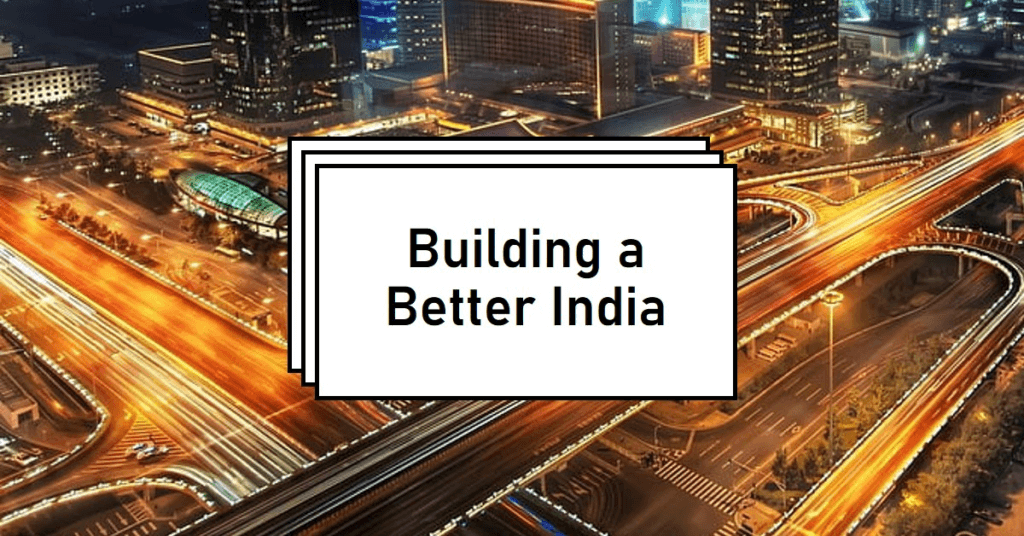India is at a pivotal moment in its economic journey. As the world’s fifth-largest economy, it has made significant strides in sectors like information technology and services. However, to truly realize its potential on the global stage, India must bolster its manufacturing capabilities. Transforming into a manufacturing superpower is not just about economic growth; it’s about creating millions of jobs, boosting exports, and reducing dependency on imports. But how can India achieve this? Here’s a comprehensive look at the five key areas that can drive India’s manufacturing sector to new heights.
1. Infrastructure Development

Infrastructure is the backbone of manufacturing. For India to become a global manufacturing hub, it needs to invest heavily in developing world-class infrastructure. This includes expanding and modernizing highways, ports, railways, and power supply systems.
Recent government initiatives like the Bharatmala Pariyojana, which focuses on improving road connectivity across the country, and the Dedicated Freight Corridors, designed to create a seamless logistics network, are steps in the right direction. However, more needs to be done to reduce logistics costs, which currently stand at 14% of GDP—significantly higher than the global average of 8%.
By enhancing infrastructure, India can reduce transportation costs, improve supply chain efficiency, and make its manufacturing sector more competitive on a global scale.
2. Skilled Labor Force

India’s large population is often touted as a demographic dividend. However, the key to unlocking this potential lies in skill development. The manufacturing sector requires a workforce that is not only large but also skilled in modern techniques and technologies.
Programs like Skill India, which aim to train millions of youth in various trades, are crucial. However, the focus should not only be on quantity but also on quality. Vocational training centers and technical institutes need to be upgraded to meet global standards, ensuring that Indian workers are adept at using advanced machinery and processes.
Additionally, fostering a culture of continuous learning and upskilling will help India’s workforce stay relevant in an ever-evolving manufacturing landscape.
3. Technological Advancement

The manufacturing industry worldwide is undergoing a transformation, driven by the Fourth Industrial Revolution (Industry 4.0). Automation, artificial intelligence (AI), robotics, and the Internet of Things (IoT) are redefining production processes, making them faster, cheaper, and more efficient.
For India to compete globally, it must embrace these technologies. Investment in research and development (R&D) is essential to foster innovation. Collaboration between the government, private sector, and academia can accelerate the adoption of cutting-edge technologies in Indian manufacturing.
Moreover, the government should provide incentives for manufacturers to adopt Industry 4.0 technologies, such as tax breaks or subsidies for automation. This will not only improve productivity but also help Indian manufacturers produce higher-quality goods that can compete in international markets.
4. Policy and Reforms

A conducive policy environment is vital for attracting both domestic and foreign investments in the manufacturing sector. India has made strides in improving its business climate, as evidenced by its rise in the World Bank’s Ease of Doing Business rankings. However, more reforms are needed to make India a manufacturing powerhouse.
Simplifying regulatory processes, reducing bureaucratic hurdles, and ensuring consistent and transparent tax policies will go a long way in attracting investments. The Make in India initiative, launched in 2014, has been a significant step towards boosting manufacturing, but its success hinges on the implementation of supportive policies at both the central and state levels.
Additionally, labor laws need to be reformed to create a more flexible and business-friendly environment while ensuring the protection of workers’ rights.
5. Global Integration and Trade

To become a manufacturing superpower, India must integrate more deeply into global value chains. This means not only increasing exports but also becoming a crucial player in the international supply chain.
Signing comprehensive trade agreements with major economies, improving relations with key trade partners, and enhancing export competitiveness are essential steps. India should also focus on producing high-value goods rather than just low-cost alternatives. This shift will require investment in advanced manufacturing techniques and a focus on quality over quantity.
Furthermore, leveraging initiatives like the Production-Linked Incentive (PLI) scheme can help attract foreign companies to set up manufacturing bases in India, thereby boosting exports and creating jobs.
Conclusion
India’s journey to becoming a manufacturing superpower is challenging but achievable. By focusing on infrastructure development, skill enhancement, technological advancement, policy reforms, and global integration, India can position itself as a leader in the global manufacturing arena.
The path to success will require collaboration between the government, industry, and academia, along with a long-term vision that prioritizes sustainability and innovation. If India can successfully navigate these areas, it has the potential to not only uplift its economy but also set an example for other developing nations to follow.
The time to act is now—India’s future as a manufacturing superpower is within reach.
#epicinfinite #epicarticle #epicblog
We’d love to hear your thoughts! What do you think are the biggest challenges and opportunities for India in its journey to becoming a manufacturing superpower? Share your insights in the comments below!










